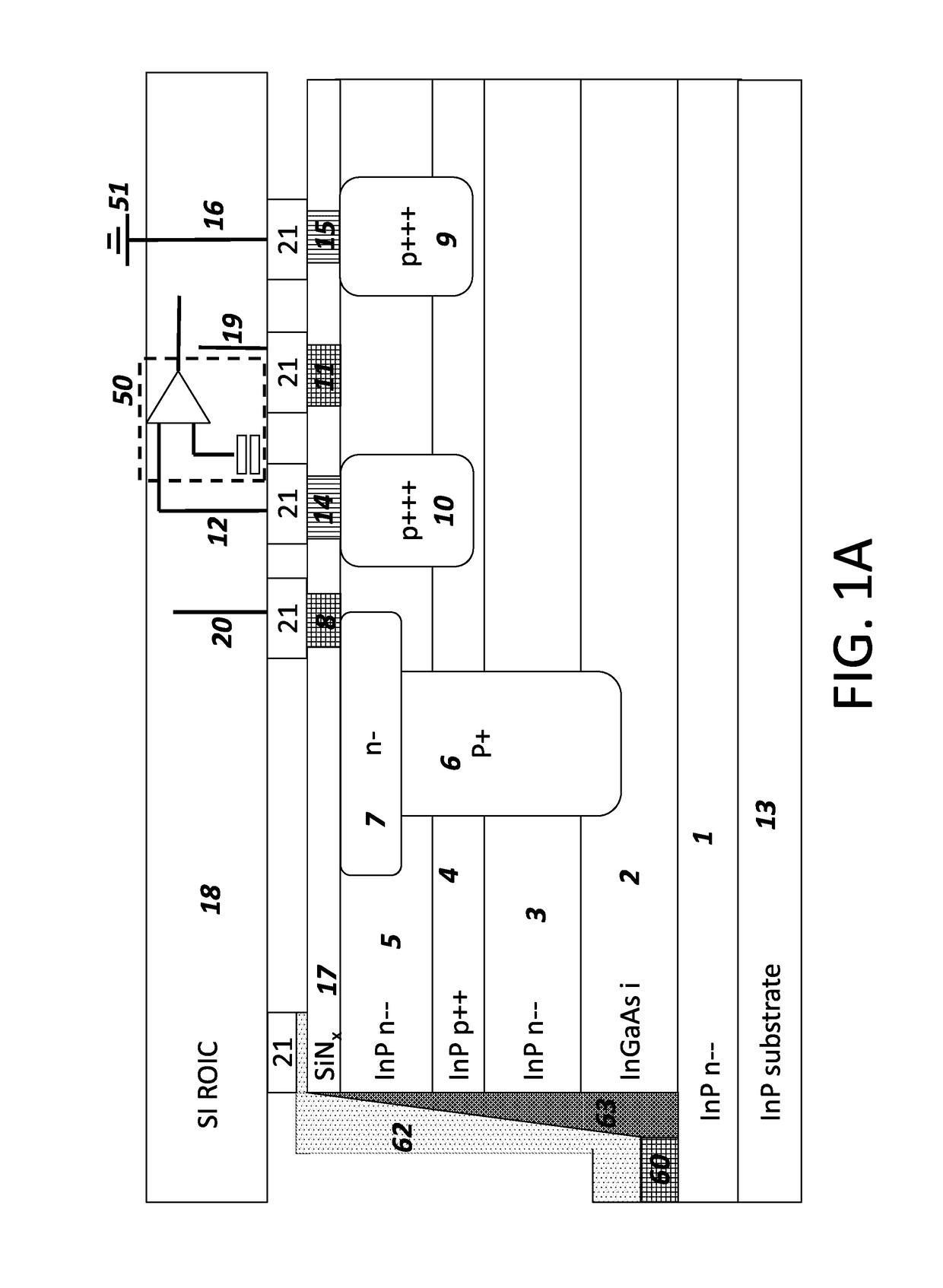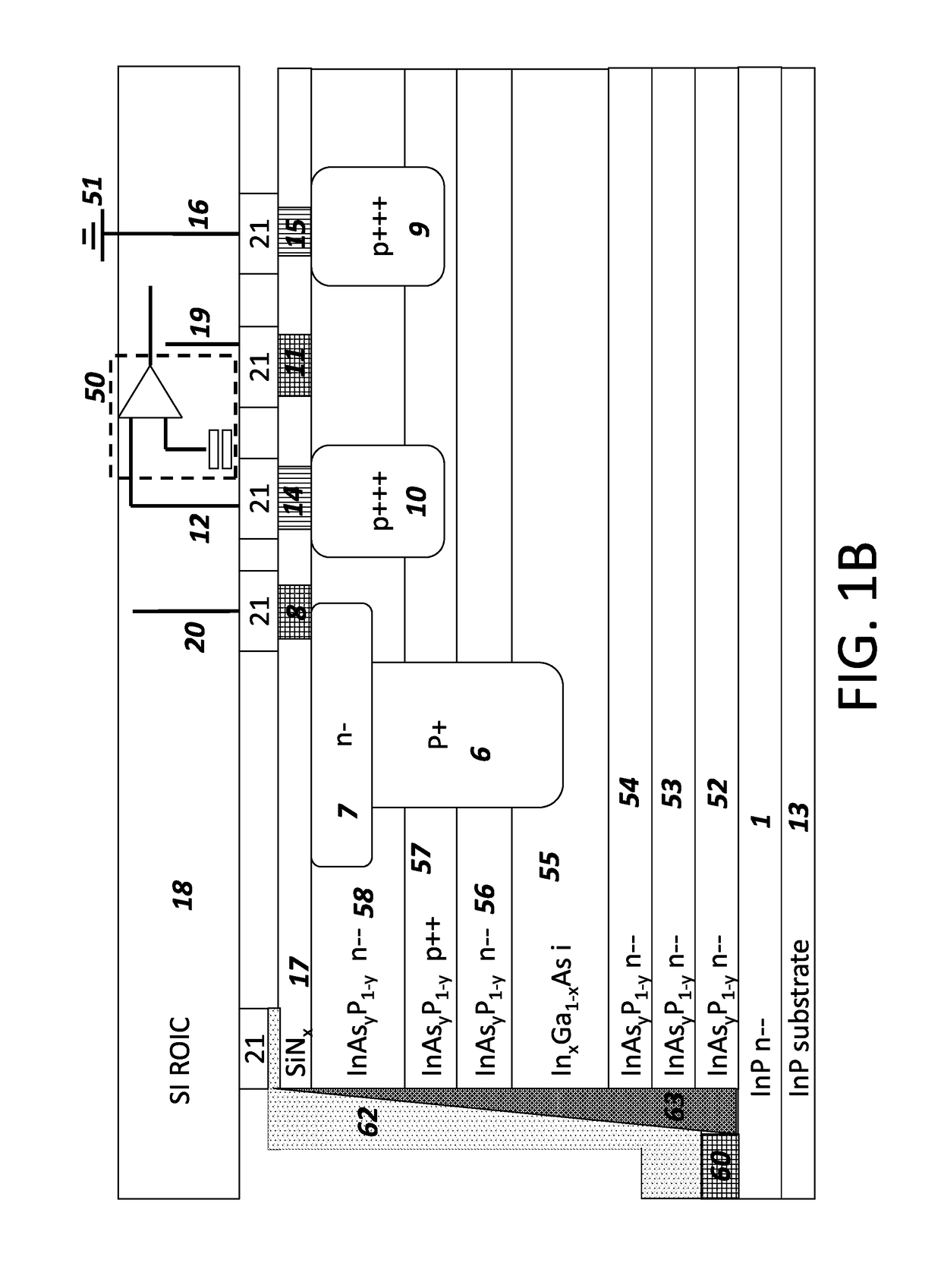Low noise InGaAs photodiode array
a photodiode array and low noise technology, applied in the field of low noise ingaas photodiode array, can solve the problems of physical isolation of the mesa device from the other, and the overall higher dark current, so as to minimize the read noise, reduce the dark current, and minimize the effect of dark curren
- Summary
- Abstract
- Description
- Claims
- Application Information
AI Technical Summary
Benefits of technology
Problems solved by technology
Method used
Image
Examples
Embodiment Construction
[0025]The present disclosure describes planar devices, which allow a complete interconnected array of pixels with no loss of material between pixels thus no loss in signal. In various implementations, an InGaAs detector array that has a buried photodiode (either p-n or p-i-n) and a junction field effect transistor (JFET) or multiple JFETs in each pixel to allow the movement of charge from the buried photodiode to a read out integrated circuit (ROIC) without the ROIC being directly connected to the photodiode. In some scenarios, the JFETs may be integrated to the photodetector in each pixel to allow movement of charge to the ROIC. A second JFET may be used to remove charge from the first JFET. This second JFET may be in each individual pixel or it may be a larger device that works an entire column or row simultaneously or 2 rows or 2 columns simultaneously. The multiple JFETs combined with the buried photodiode enables double correlated sampling in the pixel as well as lower capacita...
PUM
 Login to View More
Login to View More Abstract
Description
Claims
Application Information
 Login to View More
Login to View More - R&D
- Intellectual Property
- Life Sciences
- Materials
- Tech Scout
- Unparalleled Data Quality
- Higher Quality Content
- 60% Fewer Hallucinations
Browse by: Latest US Patents, China's latest patents, Technical Efficacy Thesaurus, Application Domain, Technology Topic, Popular Technical Reports.
© 2025 PatSnap. All rights reserved.Legal|Privacy policy|Modern Slavery Act Transparency Statement|Sitemap|About US| Contact US: help@patsnap.com



